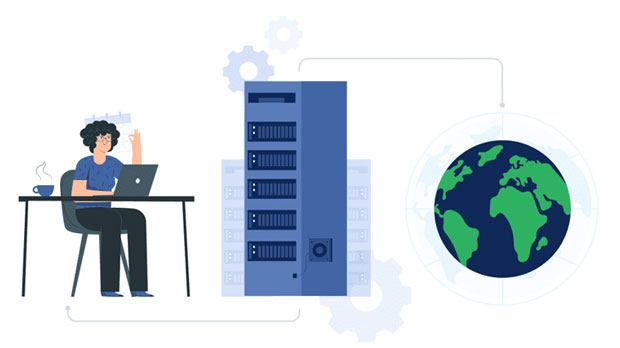The dedicated socks5 proxy is an efficient, secure and flexible Internet communication tool, which can provide privacy protection and network performance improvement solutions for various industries. Compared with traditional proxies, socks5 proxies are not limited to specific application protocols and support multiple types of network traffic, which can adapt to different needs. Therefore, dedicated SOCKS5 proxies demonstrate their unique advantages in scenarios that require high anonymity, cross regional access, and high-frequency data scraping. Especially in the fields of Internet marketing, data analysis, network security and content creation, special SOCKS5 agents are widely used to help enterprises and individuals achieve more efficient and secure online activitiesDefinition and advantages of SOCKS5 proxy SOCKS5 proxy is a network protocol that allows users to send and receive data through a proxy server. Compared to other types of proxies such as HTTP proxies, SOCKS5 provides a wider range of protocol support, not only supporting the common HTTP/HTTPS protocol, but also supporting multiple protocols such as FTP and SMTP, enabling it to handle almost all types of network traffic. Its advantages lie in strong anonymity, support for encrypted communication, and adaptability to high bandwidth requirements. Through a dedicated SOCKS5 proxy, users can hide their real IP address, protect their internet privacy, and because proxy servers usually do not filter data content, their speed is usually fast, making them suitable for businesses that require large amounts of data transmissionI. Internet Marketing IndustryIn the field of Internet marketing, dedicated SOCKS5 agents are widely used in data capture, competitor analysis, advertising and other scenarios. Due to the need for many enterprises to extract data from various websites for market analysis or competitive research, using SOCKS5 proxy can effectively avoid being blocked or restricted in access frequency by the target website. Here are several common application scenarios:1. Data Capture and Crawling TechnologyBy using a dedicated SOCKS5 proxy, enterprises can bypass the IP blocking and access restrictions of the target website and quickly capture the required public data. For e-commerce platforms, social media analysis, etc., data capture is an important component of marketing strategies. By switching multiple IP addresses, SOCKS5 proxy can improve the success rate of data collection and avoid IP blocking caused by frequent requests2. Advertising placement and optimizationDuring the advertising process, using a dedicated SOCKS5 agent can simulate visits from different regions, helping advertisers optimize regional advertising. By hiding users' real IP addresses, advertisers can test and adjust the effectiveness of ad displays, avoiding regional restrictions or ad fatigue effects3. Social media managementWhen managing multiple social media accounts, especially when it comes to cross regional content publishing and user interaction, SOCKS5 proxy provides a stable solution. It can effectively prevent the platform from detecting abnormal activity from multiple accounts and improve account securityII. Data Analysis IndustryThe data analysis industry relies on large-scale data collection and processing, and SOCKS5 agents play an important role in this process. A dedicated SOCKS5 proxy can provide stable and efficient network connections, supporting batch access to data sources. Its application advantages are mainly reflected in the following aspects:1. Distributed data collectionData analysts typically need to collect data from different regions or platforms. Using SOCKS5 proxy can avoid being blocked due to frequent requests from a single IP, and through the cooperation of multiple proxy IPs, ensure the efficient completion of data retrieval tasks2. Anonymity and Data Privacy ProtectionMaintaining anonymity is crucial during the data collection process, especially when it comes to competitor data scraping. SOCKS5 proxy can hide the real IP address, protect the privacy of data collectors, and reduce the risk of network attacks and data leaks3. Multi source data integrationWhen processing data from multiple channels, a dedicated SOCKS5 proxy can ensure smooth data flow and avoid traffic restrictions due to frequent requests, thereby ensuring the timeliness and integrity of dataIII. Network Security IndustryIn the field of network security, dedicated SOCKS5 proxies are widely used for penetration testing, network protection, and reverse proxy operations. Network security experts need to conduct security assessments and tests on target websites or servers. Using SOCKS5 proxy can better protect the identity and location of testers and reduce exposure risks. Specific applications include:1. Penetration testing and security assessmentNetwork security experts usually use SOCKS5 proxy to mask the attacker's real IP address during penetration testing, in order to avoid exposing the attack source and ensure the anonymity of the testing process. The use of multiple proxy IPs can also simulate various attack scenarios, improving the authenticity and effectiveness of testing2. Reverse proxy and load balancingWhen building a reverse proxy server, SOCKS5 proxy can effectively handle traffic requests from different regions, optimize load balancing, and improve service stability. Through this approach, enterprises can effectively prevent DDoS attacks and other forms of network intrusion3. Anonymous Internet Access and Privacy ProtectionFor users or organizations that require high privacy protection, SOCKS5 proxy provides an encrypted communication channel to effectively protect the transmission security of sensitive data. This is particularly important for government agencies, journalists, or other industries that are concerned about privacyIV. Content Creation and Media IndustryThe content creation and media industries are also using dedicated SOCKS5 agents to optimize content publishing and dissemination effects. Whether it's testing content for different regions or publishing news and entertainment information through multiple IP addresses, SOCKS5 agents can provide effective support1. Cross regional content publishing and testingA dedicated SOCKS5 proxy can help media companies bypass geographical restrictions, test and publish content from different regions. For example, news organizations may need to publish the same content globally, and using proxy servers can ensure that the content can be smoothly distributed to different regions2. The use of virtual IP addressesContent creators use SOCKS5 proxy to avoid frequent operations with a single IP, thereby improving account security and avoiding platform restrictions on content distribution3. Protecting Creative CopyrightContent creators use SOCKS5 proxy to hide their real IP address, which helps prevent online piracy and plagiarism. It can protect original content from illegal reproduction or theftFifth, E-commerce IndustryIn the e-commerce industry, SOCKS5 agents are mainly used for price monitoring, market research, cross-border shopping, and preventing cyber attacks. Proxy services can help e-commerce platforms collect data and market trends from competitors worldwide, and conduct cross-border transactions and monitoring by simulating different user identities1. Price Monitoring and Competitive AnalysisE-commerce enterprises can monitor the price changes of competitors worldwide and adjust their pricing strategies in a timely manner by using SOCKS5 agents2. Cross border shopping and bypassing regional restrictionsDue to many e-commerce platforms setting different products and prices in different regions, using SOCKS5 agents can help e-commerce consumers access products from other regions and obtain the best purchase timing3. Anti fraud and anti network attackE-commerce platforms can use SOCKS5 proxies to hide their online behavior, preventing malicious attacks from competitors or obtaining internal data through improper meansConclusionThe widespread use of dedicated SOCKS5 proxies in multiple industries and applications demonstrates their enormous potential in enhancing network security, improving efficiency, and protecting privacy. Whether it is Internet marketing, data analysis, network security, content creation, e-commerce and other industries, they can all benefit from the anonymity, stability and flexibility of SOCKS5 agents. With the development of Internet technology, SOCKS5 proxy will become an indispensable tool in the daily network activities of more and more enterprises and individuals in the future.
Jan 03, 2025
![arrow]()



















































